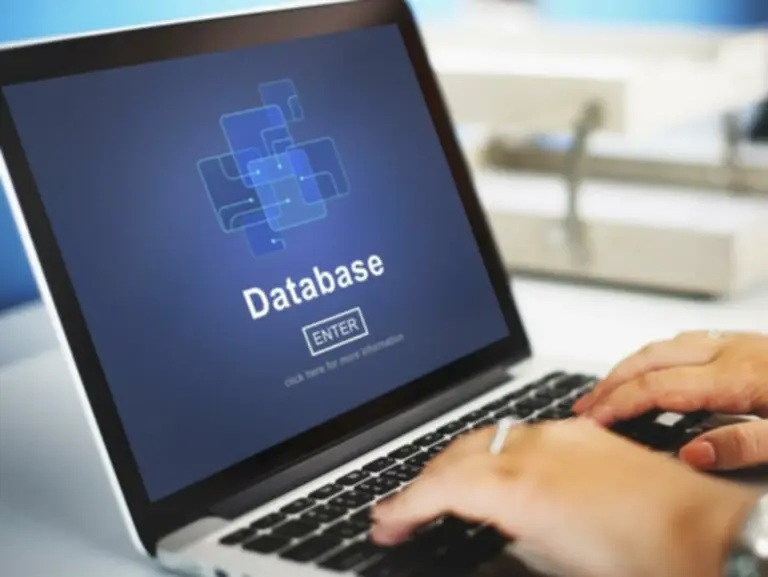MongoDB and PostgreSQL Database Technologies

Nowadays, many database management developers provide several possible solutions. The choice between MongoDB and PostgreSQL arises.
So what is the difference between them?
- MongoDB is a popular NoSQL database developed by MongoDB Inc. It is a document-oriented, cross-platform program using JSON (JavaScript Object Notation) like documents and additional schemas to store data.
- On the other hand, PostgreSQL is a free and open-source RDBMS (Relational Database Management System) developed at the University of California, Berkele.
Different organizations use both technologies, which are used simultaneously, or one dominates the other.
Why do we need databases? They are the essential backbone of software development, and they serve many building projects purposes of all sizes and types. They are used for building projects of all sizes and types. Understanding why we need databases helps when choosing a structure for companies’ stacks essential backbone.
MongoDB Review
MongoDB is a schemaless document database offering free and paid tariffs. It is a document database with a different structure and syntax than the traditional RDMS (Relational Database Management System). It’s a NoSQL database (not just SQL).
MongoDB uses BSON, a JavaScript object’s binary notation, to make queries extremely fast. BSON is not meant to be read by humans. BSON is converted to readable JSON when the collection is opened. When browsing the documents, you will recognize the ever-popular JSON format with key/value pairs that are language-independent.

We are confident that we have what it takes to help you get your platform from the idea throughout design and development phases, all the way to successful deployment in a production environment!
MongoDB Key Features
The database provides different services, making it a better solution than other databases. Here are some of the main features:
- includes search by field, range query, regular expressions;
- Supports special adds requests;
- the schemaless database is written in C++ and provides high performance;
- indexes any field in a document;
- supports Master-Slave replication;
- provides an autoload configuration feature to group similar data;
- stores files of any size without complicating the stack;
- provides easy administration in case of failures;
- uses JavaScript instead of procedures;
- supports the JSON data model, automatic sharding, and built-in replication for high scalability and availability.
Google Cloud Platform, Amazon Web Services (AWS), and Microsoft Azure cloud platforms can host MongoDB.
MongoDB is used to provide:
- customer analytics;
- content management;
- business transactions;
- product data.
The database is ideal for mobile solutions needed to scale to millions of users due to its scalability. Another important use case is platforms offering data as a service. MongoDB can update data in real-time and view the newly available information. MongoDB’s intelligent data platform combines the database with other complementary technologies to become a complete IoT (Internet of Things) platform supporting IoT applications.
MongoDB Advantages
The database does not require predefined schemas. It stores any data types, which give users the ability to create any number of fields in a document, making MongoDB scaling easy.
One advantage of using documents is objects mapping to native data types in different programming languages. Having embedded documents reduces the need for database connections and lowers costs.
MongoDB can scale horizontally, making it useful for large data applications companies. Sharding allows the database to distribute data across a cluster of machines. Newer versions support creating data zones based on a shard key.
MongoDB supports a range of storage engines and provides pluggable storage engine APIs allowing third parties to develop their storage engines in MongoDB.
The database has built-in aggregation capabilities. It includes its file system called GridFS, similar to the Hadoop Distributed File System (HDFS), which stores file more significantly than the BSON limit of 16MB per document. So the database can be used instead of Hadoop, although the database software integrates with Hadoop, Spark, and other data processing platforms. Users can run MapReduce code directly on the database instead of running MapReduce on Hadoop.
MongoDB Disadvantages
MongoDB has some drawbacks. The user configures only one primary node in the cluster with an automatic failover strategy. The other node will automatically convert to the new master if it fails. This switchover promises continuity but may take up to a minute.
MongoDB’s single primary node limits the rate at which it writes data to the database. Entries must be made on the primary node, and the primary node capacity determines the writing of new information to the database.
MongoDB does not provide complete referential integrity by using foreign key constraints affecting data consistency. MongoDBused does not embed user authentication by default. However, hackers targeted unsecured base systems for ransom, which led to the default setting blocking network connections to databases unless the administrator has configured them.
PostgreSQL Review
The database is a free post-launch open-source system running on all major operating systems. PostgreSQL is in the top 5 DBEngine databases used more often than most commercial systems. With millions of embedded deployments, major cloud service providers, and significant on-premises installations, PostgreSQL is the most popular application development choice. Over the 25 years of working on PostgreSQL, several features have been developed for developers and administrators, delivered on a reliable software server operating worldwide.
PostgreSQL Key Features
PostgreSQL is a large and robust database system used in managing facilities associated with objects, bringing great performances on parallel operations and control over the scheme.
It’s very firmly, and once set, it is easy to support and hard to break. PostgreSQL supports many data analysts’ features.
There are many third-party applications (paid and free). PostgreSQL is constantly improved, there is a well-defined service plan, and the new versions regularly go out.
PostgreSQL has many modern features offering other business database management systems such as:
- User identified by Types;
- Table inheritance;
- Refined locking mechanism;
- Foreign integrity assessment;
- Views, rules, subscriptions;
- Enclosed operations or Safepoints;
- Concurrency control Multi-version (MVCC);
- Asynchronous replication.
The latest versions of PostgreSQL support the following features:
- Microsoft Windows Server Server;
- tablespaces;
- immediate restoring;
- new features in each new release.
The database supports such languages:
- SQL;
- Tcl;
- Per;l
- Python;
- Java;
- Lua;
- R;
- shell;
- Javascript.
PostgreSQL is designed to be extendable and allows determining data, index types, functional languages, etc.
There is a possibility of developing plugins to improve the database to satisfy business requirements, such as adding a new optimizer.
Pros and Cons
The main advantage of PostgreSQL are:
- Open source code. The source code is freely available in open source licenses. This gives freedom of use, changing, and implementing it according to business needs.
- Reduce costs. PostgreSQL does not cost anything and has no licensing fees as an open-source product. So there is no need to worry about license costs, contractual issues, and dealing with a high-budget product. It is available at any time.
- The community manages reliability. Several companies and individuals have contributed to the project and brought innovations for 25 years. A strong community ensures correcting errors without delay. PG is supported by a wide extension array plus several SQL and NoSQL data models. Our contribution to PostgreSQL.
- Security. There are many features to enhance security, thanks to a light extension: however, if the business uses the correct (TDE, disguise data), it gets very secure database technologies taking care of the most valuable assets — data.
- Scalability. The database can grow with the project. There are several technical options for PostgreSQL on the scale. That’s why the PostgreSQL database can grow with the project, and perhaps as big as it needs.
However, the database has some disadvantages. Below some shortcomings and restrictions of PostgreSQL are listed:
- it does not belong to one organization. It has problems with using its name, even though it is fully represented and comparable to other DBMS systems;
- Changes made to improve speed requires more work than MySQL as PostgreSQL is devoted to compatibility;
- Many open source applications support MySQL but cannot support PostgreSQL;
- The performance metric is slower than MySQL.
What to Choose?
Developers can use MongoDB or PostgreSQL to develop and build any design project. If not implemented correctly, NoSQL and SQL database technologies can cause bottlenecks and interfere with performance. Most developers use a specific database strategy depending on the front end, called a database, to avoid problems.
An e-commerce interface will work well with an SQL database, such as PostgreSQL. PostgreSQL is a traditional SQL relational database and works well for basic applications where data is structured. Data are saved using specific data types, and developers can define and classify data. For the e-commerce store, product descriptions will always have symbol strings, and a product price is always a decimal number. The data is predictable and structured to control the PostgreSQL database.
If you need analytics and do not know the data structure, you need a NoSQL database, such as MongoDB. These databases support unstructured data petabytes and are used in analytics and reporting. Suppose the business imports and stores data from web pages with different document structures. The business can foresee prospective sales using machine learning. MongoDB will support unstructured data from HTML pages and provide performance and analytical capabilities for machine forecasts. These predictions can be used in marquees for sale and marketing to determine the products that will sell the best in the coming years and the most effective price structure.
Top Articles
ABC of DevOps Testing: Types, Best Practices, and Everything You Need to Know
I am here to help you!
Explore the possibility to hire a dedicated R&D team that helps your company to scale product development.






